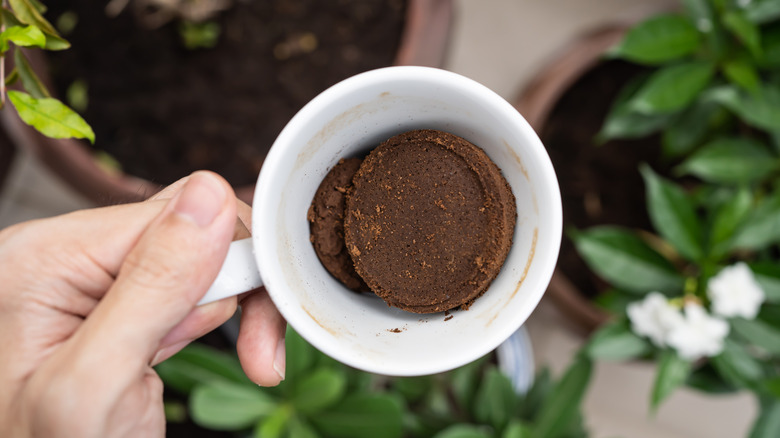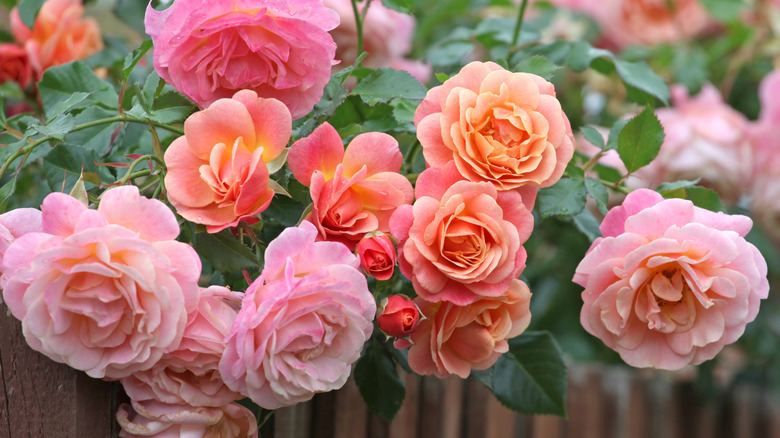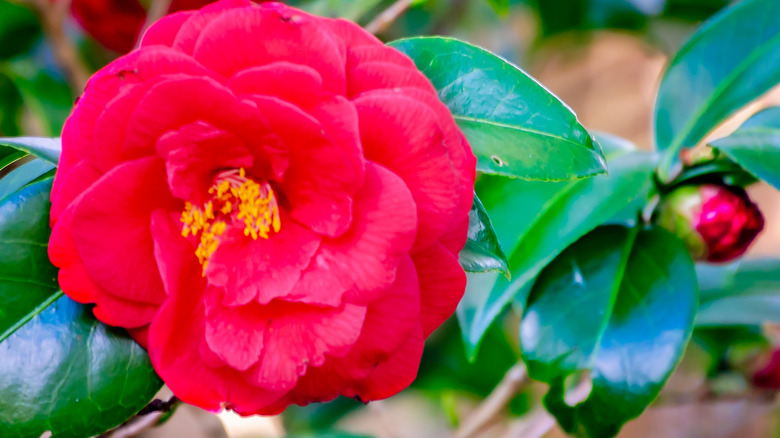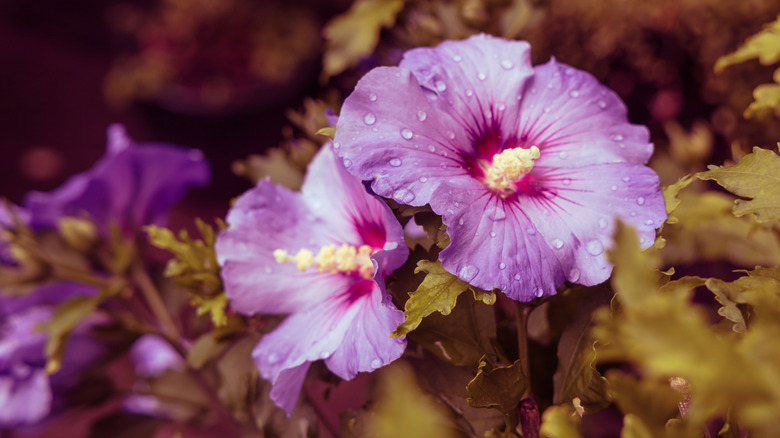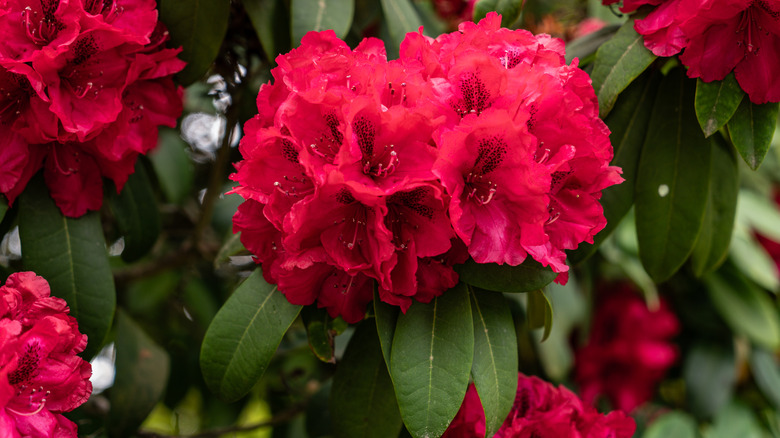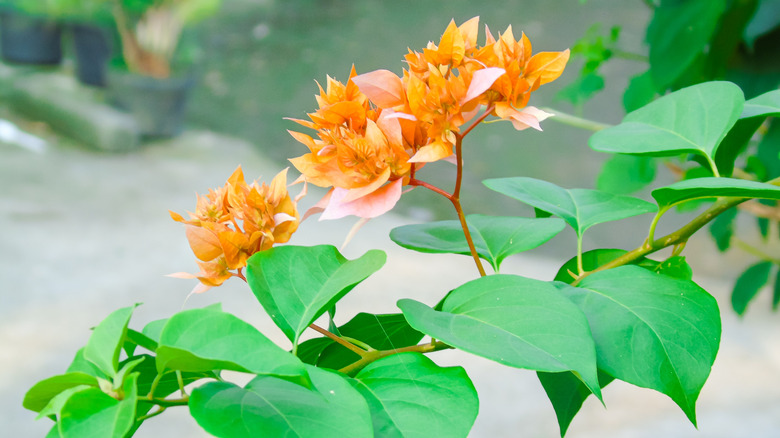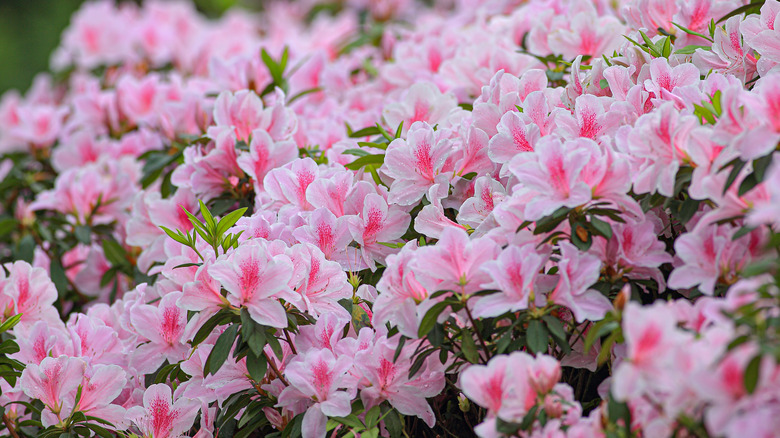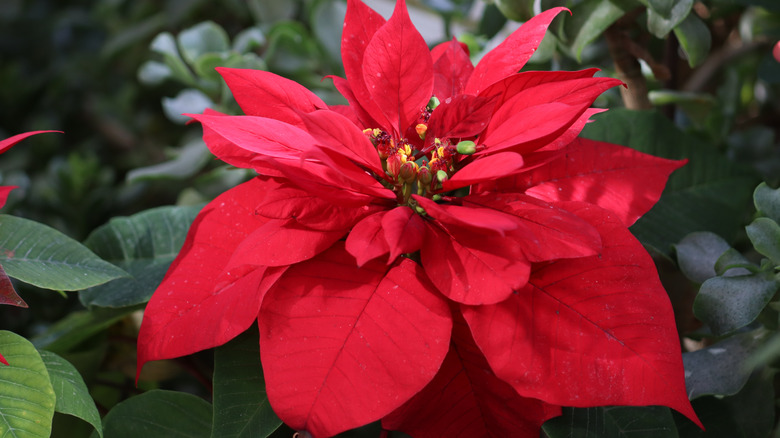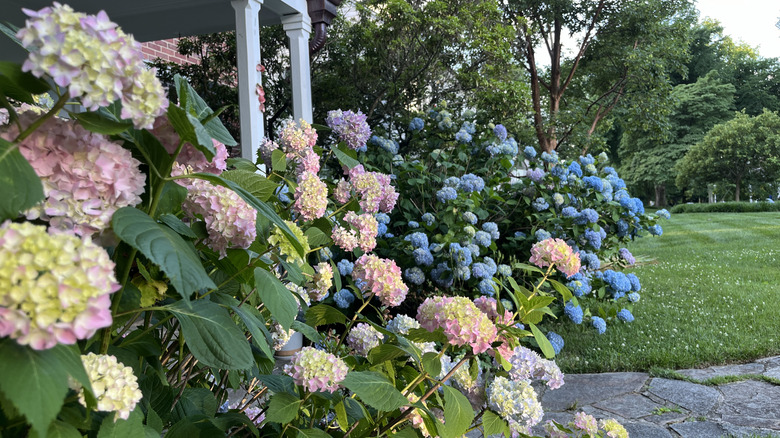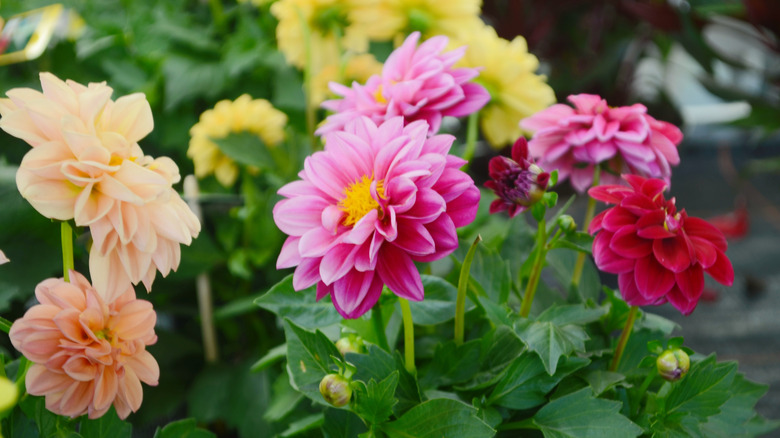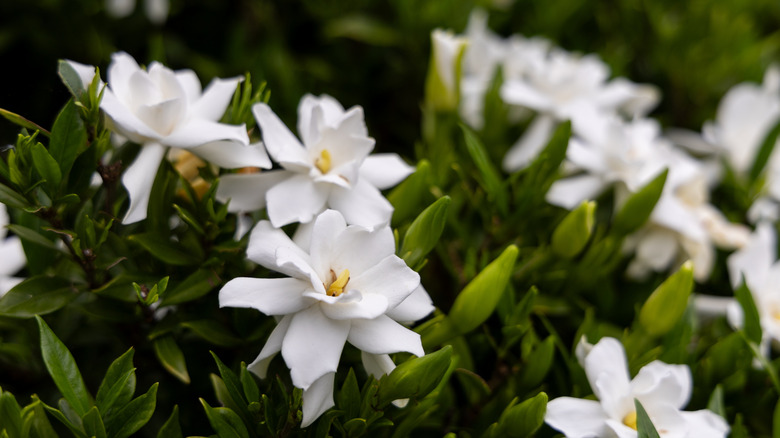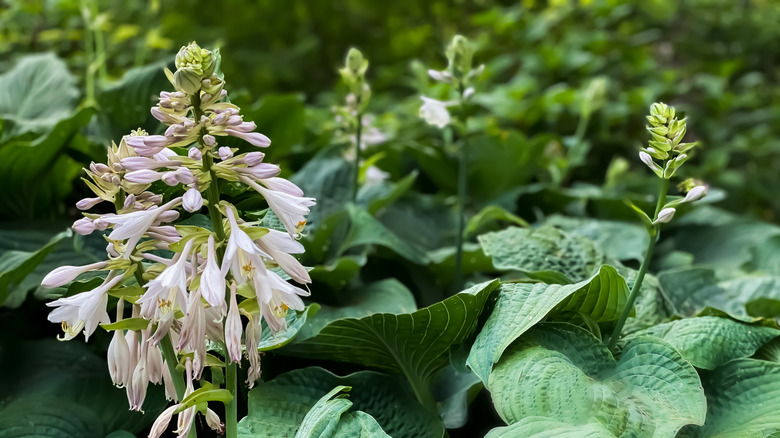12 Flowers In Your Garden That Will Thrive When You Add Coffee Grounds
It's becoming more popular to reuse coffee grounds as gardening complements. Once the jolt of caffeine from coffee has benefited us, the grounds can help plants by adding some nitrogen and micronutrients to the soil. They also might help suppress some microbes that cause plant diseases. Cafes have started offering coffee grounds to gardeners, sometimes leaving them outside the store, with signage that indicates they're free for the taking. Coffee grounds can help indoor plants thrive and boost many outdoor flowers, including roses, bougainvillea, and hibiscus.
Once you get the used coffee grounds, they can be lightly mixed into your garden soil either immediately or once they've been composted. After you place them into the dirt, they are then broken down by bacteria and fungi so their compounds can be of use to garden plants. There are a few caveats to keep in mind, though. Experts say not to get too aggressive with coffee ground usage, and they also caution that the grounds alone won't create a drastic soil change for flowers that need a lower soil pH. Mix your used coffee grounds with other organic materials to create the most effective mulch since the grounds used by themselves or in too thick a layer can keep moisture and air out of the soil.
1. Roses
Apply coffee grounds to your roses in the spring to keep them at their healthiest. The potassium, phosphorus, and nitrogen that coffee grounds contribute to the soil are a boon for roses (Rosa spp). Nitrogen, in particular, encourages new growth. Just make sure not to use coffee grounds as a fertilizer substitute where your roses are concerned. Research has shown that coffee alone doesn't make the soil acidic enough for acid-loving plants like roses. Gently spread a fertilizer to the base of the plants a few times every year in addition to using coffee grounds for best results.
2. Camellias
Camellia (Camellia japonica), which produce pink and red flowers, are a great choice if you want winter blooms year after year since they are evergreen, sometimes called winter roses. They favor soil full of organic material, which is where coffee grounds factor in. Adding coffee grounds and other ingredients, such as moss can make the soil more hospitable to their growth. The flowers will love the steady flow of nitrogen slowly broken down in the soil after coffee is introduced.
3. Wingpod purslane
This succulent bursts forth in lovely cup-shaped flowers in orange and red hues. Incorporating coffee grounds around the purslane (Portulaca umbraticola) will nourish earthworms in the soil. These wrigglers make the soil more porous, helping give it the well-draining quality wingpod purslane needs. And a healthy dose of coffee grounds has also been shown to discourage the fungus that can cause herbaceous succulents like them to wilt.
4. Hibiscus
The huge flowers of hibiscus (Hibiscus rosa-sinensis) take our breath away, remind us of tropical escapes, and can attract hummingbirds and butterflies with their dramatic blooms. Your hibiscus plants will thrive with the help of this kitchen staple for similar reasons coffee grounds benefit other plants. This is also a plant that needs plenty of nutrients to replenish itself after it flowers, and mixing in coffee grounds and other fertilizing products can help ensure none of its needs go unaddressed. If calcium or magnesium is missing from the fertilizer, supplementing with coffee grounds may help fill the gap.
5. Rhododendrons
This flowering shrub treats gardeners to many delicate pink clusters, but it needs catering to with the right balance of acid in its soil. An organic material like coffee grounds can add some carbon that gets the soil toward a more acidic state, even though they're slow-acting. In concert with other methods to acidify the soil, you can add a layer of coffee grounds and other materials, like pine needles, 1 to 2 inches deep on the soil before you plant your rhododendrons.
6. Bougainvillea
The tropical plant bougainvillea grows in vines sporting modified leaves that look like flowers in vibrant colors. It needs acidic soil, preferably with a pH between 5.5 and 6. The coffee filtering process does leave some acid in the grounds but don't just rely on the grounds alone to acidify the soil. This is where you'll also want to measure the pH of your soil, looking for pH readings below 7 to indicate acidic conditions. It's best to avoid mixing too much coffee into the soil around a bougainvillea. An excess of nitrogen could affect the plant's blooming.
7. Azaleas
A popular landscaping plant, azalea (Rhododendron spp.), is a flowering shrub that, at its healthiest, is covered in an abundance of white, pink, or red flowers. Your leftover coffee can be spread onto the ground with other natural ingredients or in a compost before you plant these organic matter-loving shrubs. Using the grounds from your morning brew around them can be a fix if your soil collects too much water, which can make these vibrant shrubs prone to root rot. Leave a few inches between the plant's stem and the mulch that includes coffee grounds.
8. Poinsettia
Although they're well known as a winter holiday house plant, poinsettia (Euphorbia pulcherrima) can also be grown outdoors in warm climates or during the summer. Their leaves, which look like petals, will turn the characteristic red, pink, or white when the days get shorter. Well-draining soil, which coffee grounds help ensure as they attract earthworms, is crucial to a poinsettia's thriving. The handy kitchen scrap will keep your poinsettia thriving after the holidays if you mix it into the top of its soil after its blooming season.
9. Hydrangeas
The pop of blue or purple that hydrangeas (Hydrangea macrophylla) bring to the garden is unmistakable. These fast-growing flowering shrubs do well when organic material, such as used coffee grounds, is incorporated into the soil. They help the soil retain water without losing its breathability, and hydrangeas love moisture. It's good to water the plant after adding the coffee grounds so the nitrogen, phosphorous, and potassium in coffee grounds can begin to work their magic.
10. Dahlias
There are many gorgeous varieties of dahlia for your garden, but unfortunately, they are attractive to slugs, which can cause damage to the plant. Coffee grounds will not only help create small pockets of air in the soil to keep it loose, as dahlias prefer, but they can do their part to keep the slugs at bay. Try creating a soil drench by mixing 1 part water to 2 parts used coffee and applying it to the soil around the dahlias. This method has been shown to repel slugs.
11. Gardenias
A timeless addition to outdoor gardens, the white-blooming gardenia (Gardenia jasminoides) is an evergreen that needs acidic soil. That's a great reason to repurpose those coffee grounds for your mulching routine. Add it in when fertilizing the plant, which should be done after the last frost. If the growth of your gardenias seems stunted, they may be missing nitrogen or phosphorus. Since coffee grounds contain both of these nutrients, it's a good idea to have them on hand.
12. Hostas
Hostas show off with their lavender or white flowers in trumpet or bell shapes, but they're also in danger of damage from slugs, which tend to leave visible holes in their large leaves. Pull out those leftover coffee grinds when you prune the hostas, which also helps discourage these critters. You can get even more protection by making a solution of 9 parts water to 1 part brewed coffee and spraying it on the plant, but be careful to test it on a small area first.
